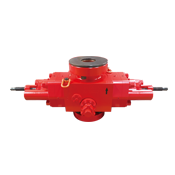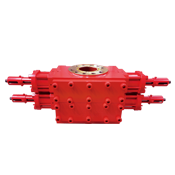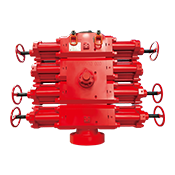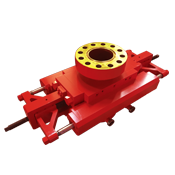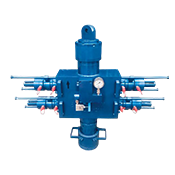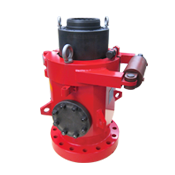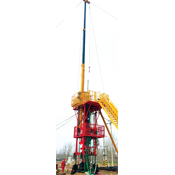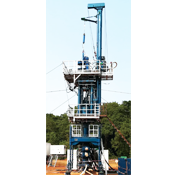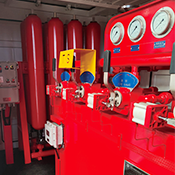Understanding the Cost Factors of Passive Rotary Blowout Preventers: A Comprehensive Guide
2024-11-15
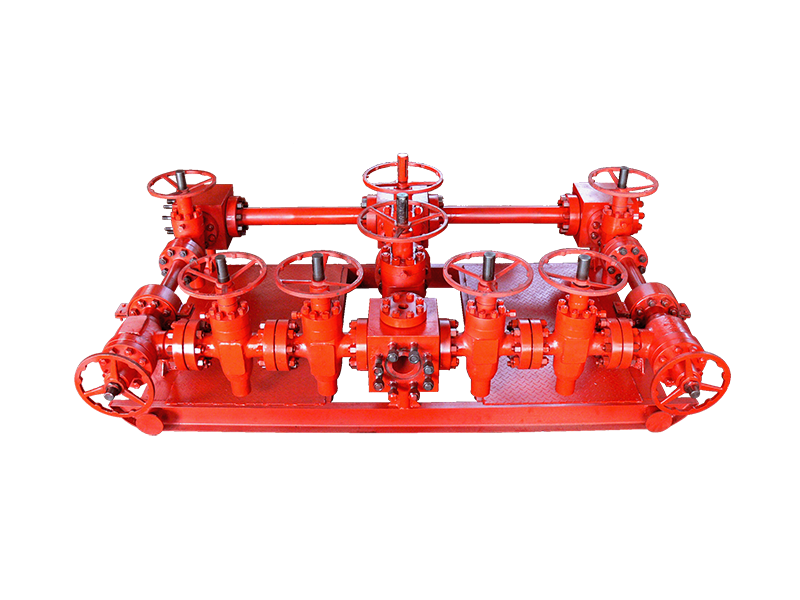
Understanding the Cost Factors of Passive Rotary Blowout Preventers
In the ever-evolving landscape of the oil and gas industry, safety remains paramount. Among the various safety mechanisms employed, **passive rotary blowout preventers (BOPs)** play a critical role in preventing the uncontrolled release of fluids during drilling operations. However, understanding the cost factors associated with these essential devices is crucial for industry stakeholders. In this article, we analyze the various elements that contribute to the cost of passive rotary blowout preventers, providing a comprehensive guide for decision-makers in the field.
Table of Contents
- 1. Introduction to Passive Rotary Blowout Preventers
- 2. Key Cost Factors of Passive Rotary Blowout Preventers
- 3. Long-Term Considerations for Investment
- 4. The Impact of BOP Costs on Safety and Compliance
- 5. Case Studies: Cost Analysis of Passive Rotary BOPs
- 6. Future Outlook for Passive Rotary Blowout Preventer Costs
- 7. Conclusion
- 8. FAQs
1. Introduction to Passive Rotary Blowout Preventers
Passive rotary blowout preventers are specialized safety devices designed to mitigate the risks associated with blowouts during drilling operations. They function by sealing the well and preventing the uncontrolled flow of hydrocarbons to the surface, thereby protecting personnel, equipment, and the environment. Understanding the cost factors associated with these devices is crucial for ensuring optimal safety practices and financial viability in drilling operations.
2. Key Cost Factors of Passive Rotary Blowout Preventers
When evaluating the cost of passive rotary blowout preventers, several key factors come into play. These factors can significantly influence both the upfront costs and the long-term financial implications of investing in these safety devices.
2.1 Material Costs
The materials used in the construction of passive rotary blowout preventers greatly impact their overall cost. Typically, these devices are made from high-quality steel and other specialized materials designed to withstand extreme pressures and temperatures. The choice of materials is critical for ensuring durability, reliability, and compliance with industry standards.
In recent years, fluctuations in the prices of raw materials—such as steel—due to global market dynamics have posed challenges for manufacturers. Companies must carefully select materials that balance cost and performance, often leading to variations in the pricing of passive rotary blowout preventers across different manufacturers.
2.2 Manufacturing Costs
Manufacturing costs encompass a range of expenses associated with the production of passive rotary blowout preventers. These costs include labor, equipment, energy consumption, and overhead expenses. Automation and advanced manufacturing techniques can enhance efficiency, but they may require substantial initial investments.
Moreover, manufacturers must adhere to strict industry regulations and quality control standards, which can increase production costs. Consequently, companies often evaluate their manufacturing processes to find ways to optimize costs without compromising on the quality and safety of their products.
2.3 Operational Expenses
Operational expenses refer to the costs incurred during the deployment and use of passive rotary blowout preventers. These expenses encompass transportation, installation, and training of personnel on proper usage. Efficient operation of BOPs is crucial for maintaining safety standards, and any lapses can lead to significant financial repercussions.
Companies must also consider the costs associated with ensuring compliance with local regulations and industry standards. This often involves regular inspections and certifications, further contributing to operational expenses.
2.4 Maintenance Costs
Maintenance is a fundamental aspect of ensuring the longevity and effectiveness of passive rotary blowout preventers. Regular maintenance checks and servicing are essential to identify potential issues before they escalate, safeguarding against costly failures during drilling operations.
Maintenance costs can vary based on the complexity of the BOP system, the frequency of usage, and the specific conditions under which the BOP operates. Implementing a proactive maintenance strategy can lead to significant long-term savings by avoiding unexpected breakdowns and ensuring compliance with safety regulations.
3. Long-Term Considerations for Investment
When evaluating the costs associated with passive rotary blowout preventers, it is essential to consider the long-term implications of the investment. While the initial purchase price may be a significant factor, understanding the total cost of ownership (TCO) over the lifespan of the equipment offers a more comprehensive perspective.
Factors such as the anticipated lifespan of the BOP, expected maintenance and operational costs, and potential downtime due to equipment failure should all be included in the analysis. Moreover, companies should also assess the potential implications of regulatory changes and advancements in technology, which could impact future costs.
4. The Impact of BOP Costs on Safety and Compliance
The costs associated with passive rotary blowout preventers cannot be evaluated in isolation; they are intrinsically linked to safety and compliance in drilling operations. Investing in high-quality, reliable BOPs may involve a higher initial outlay but can lead to significant savings in the long run by preventing blowouts and the associated financial and reputational damage.
Moreover, companies must stay ahead of evolving safety regulations and standards. Non-compliance can result in heavy fines and legal repercussions, making it essential to factor in compliance costs when evaluating BOP investments.
5. Case Studies: Cost Analysis of Passive Rotary BOPs
Several industry case studies illustrate the varying costs associated with passive rotary blowout preventers. For example, a large oil and gas operator invested in state-of-the-art BOP technology, which initially incurred significant costs but resulted in a marked decrease in blowout incidents and related expenses over time.
By contrast, another company opted for a lower-cost BOP solution, which ultimately led to numerous operational challenges and increased costs associated with maintenance and repairs. These case studies underscore the importance of thorough cost analysis and the potential long-term benefits of investing in quality BOP technology.
6. Future Outlook for Passive Rotary Blowout Preventer Costs
The future of passive rotary blowout preventers is closely tied to advancements in technology and shifts in market dynamics. As the industry increasingly embraces automation and smart technologies, the manufacturing and operational costs of BOPs are likely to evolve.
Moreover, as environmental regulations become more stringent, investing in advanced BOP systems that meet compliance standards will likely become a necessity. Companies that proactively adapt to these changes will not only enhance safety measures but also position themselves favorably within the competitive landscape.
7. Conclusion
Understanding the cost factors associated with passive rotary blowout preventers is essential for making informed decisions in the oil and gas industry. By comprehensively evaluating material, manufacturing, operational, and maintenance costs, stakeholders can optimize their investments in safety and compliance. Ultimately, investing in quality BOP technology and proactive maintenance strategies will contribute to safer drilling operations and long-term financial savings.
8. FAQs
What is a passive rotary blowout preventer?
A passive rotary blowout preventer is a safety device designed to seal a well and prevent the uncontrolled release of fluids during drilling operations.
What are the main cost factors of passive rotary BOPs?
The main cost factors include material costs, manufacturing costs, operational expenses, and maintenance costs.
Why is maintenance important for passive rotary blowout preventers?
Regular maintenance is crucial for ensuring the reliability and effectiveness of BOPs, preventing costly breakdowns and ensuring compliance with safety regulations.
How do operational expenses impact the overall cost of BOPs?
Operational expenses, including transportation, installation, and training, directly contribute to the total cost of ownership and must be factored into the investment decision.
What should companies consider when evaluating BOP investments?
Companies should consider the total cost of ownership, anticipated lifespan, maintenance costs, and potential implications of regulatory changes when evaluating BOP investments.
Related News
Contact Us
Mailbox:
tiehu@tiehupetro.com
Telephone:
86-317-2616808
Address:
Yanling Industrial Zone, Renqiu City, Cangzhou City, Hebei Province, China

